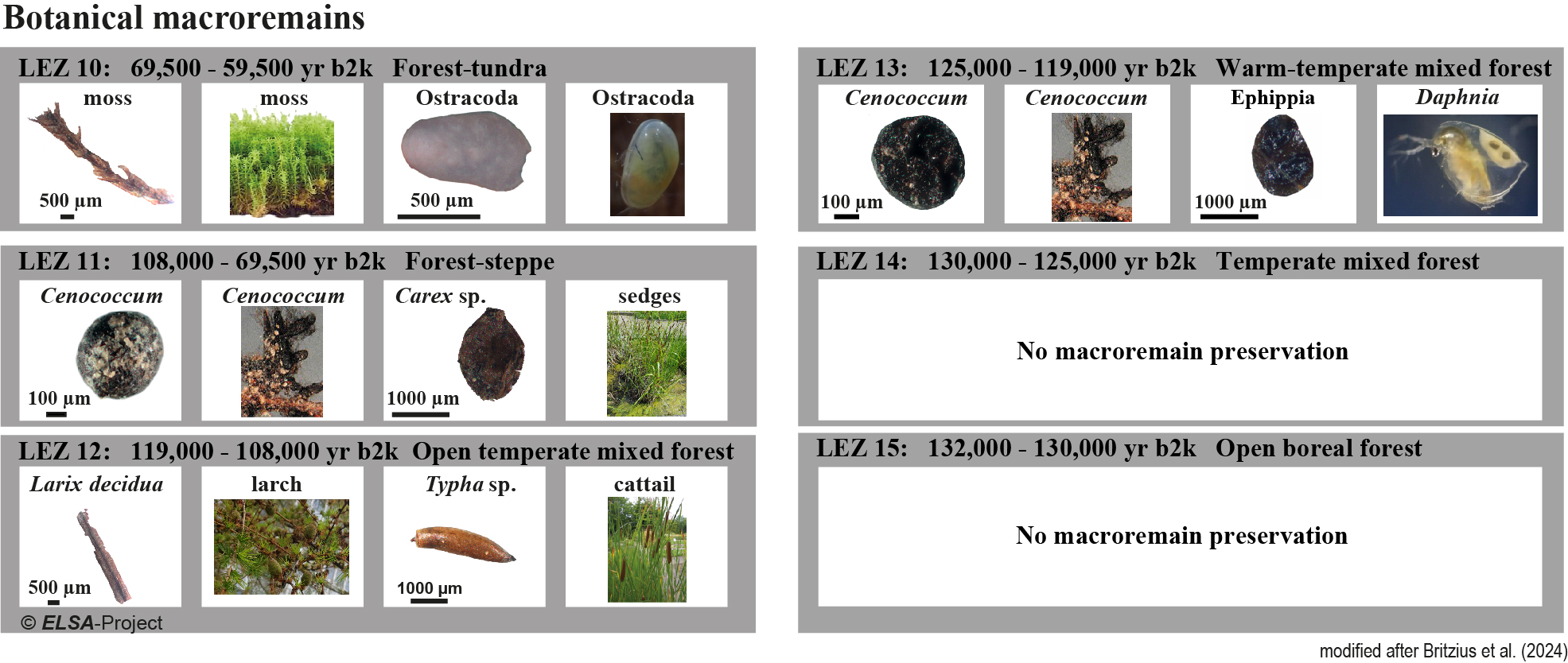Botanical Macroremains
- Macroremains Core AU2
- Macroremains Graphics
The at least seasonal anoxia, as described above, results in a good preservation of all organic matter, including wood, seeds, plant fragments. These fragments are washed into the basin by creeks and get deposited in the sediment. Macroremains can be sieved out of the sediment and the fraction >1 mm is analysed under a binocular. Many macroremains can be identified taxonomically to indentify the plants they are derived from. The macroremain results from the ELSA cores match in general the findings from pollen, but the macroremains are much better suited to identify non arboreal taxa, in particular remnants from past landuse and natural flowers in the catchment region of the respective maar lake.
It is a particular advantage of those particles that they can been identified taxonomically precisely, like the oospores from characea (underwater vegetation near the lake surface). Biogeochemical and isotope analysis of these macroremains from selected species have the potential to reconstruct temperature and water nutrient content (Anhäuser et al., 2014), but also the ancient DNA of plants, an approach which we are expanding at the moment.





